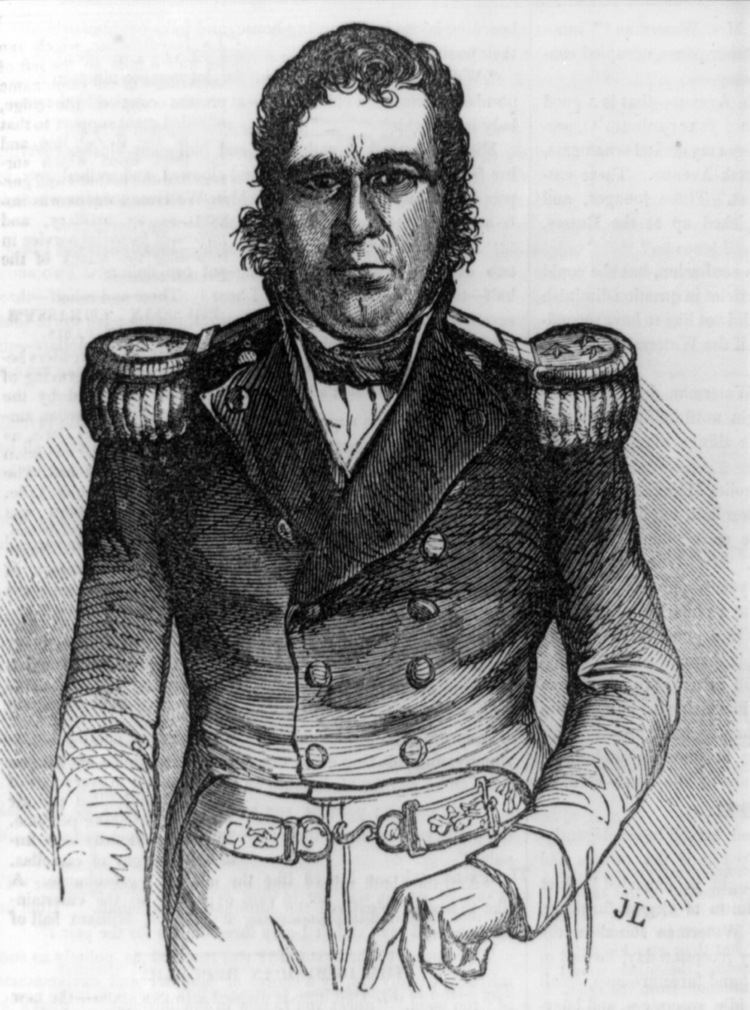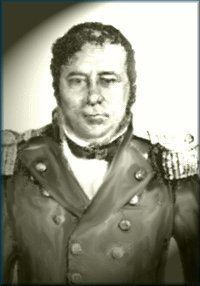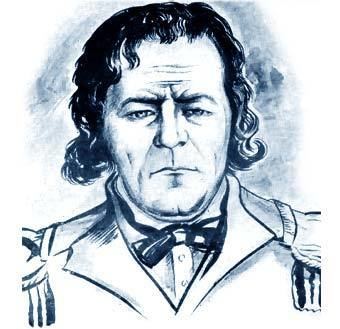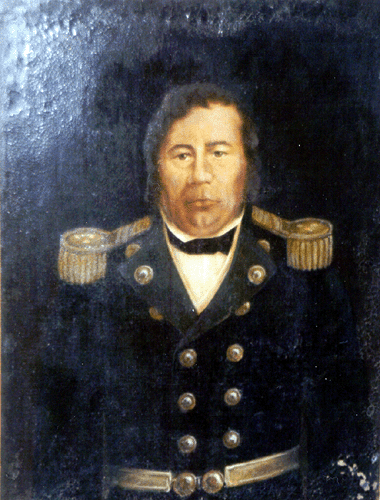Vice President None Name Pedro Santana | Preceded by Buenaventura Baez Preceded by Inaugural holder | |
 | ||
Succeeded by Council of Secretaries of State Presidential terms November 13, 1844 – August 4, 1848, July 28, 1858 – March 18, 1861, February 15, 1853 – May 26, 1856 Spouse Ana Zorrilla, Micaela Rivera Presidency end date March 18, 1861, August 4, 1848, May 26, 1856 Similar People Buenaventura Baez, Francisco del Rosario Sanchez, Gregorio Luperon, Juan Pablo Duarte, Charles Riviere‑Herard | ||
Don Pedro Santana y Familias, 1st Marquis of Las Carreras (June 29, 1801 – June 14, 1864) was a wealthy cattle rancher, soldier, politician and dictator of the Dominican Republic. He was born in the city of Hincha (today Hinche), which was part of the Colony of Santo Domingo and at the time, the third largest city of the Spanish colony, with 12,000 inhabitants (1785 church census). Currently, Hinche is located in Haiti. He was the first constitutional President of the Dominican Republic, and the first Marquess of Las Carreras.
Contents

Background

His parents were Pedro Santana, an indigenous Mexican man, and Petronila Familias, a Canarian woman, both landowners in the border zone between Santo Domingo and Saint Domingue; this meant that Santana was a Mestizo. Around 1805, Santana moved with his family to the Cibao valley, and later to El Seibo at the eastern part of the colony, where he eventually became a cattle rancher for two years.
Military and political role

Santana was the Dominican Republic's president (although he ruled as a dictator) during the years 1844–48, 1853–56, and 1858–61 (when Spain annexed the Dominican Republic as Santana wished). Thereafter, Santana became governor, with the rank of Captain General of the territory. He held those titles until 1862.
Santana had great talent as a military leader, but was unable to leave his dictatorial personality on the battlefield. Though many historians criticise his rule as an economic disaster, Santana was meticulous in conducting public affairs, and obviously a great soldier.
Santana also fought with distinction in the Revolution of July 7, 1857, when Cibao placed their revolutionary army under his command. The Congress of the Dominican Republic awarded Santana the title of “Liberator of the Nation” on July 18, 1849 for his victory in the Battle of Las Carreras.
As a dictator
He is considered a brilliant military strategist, and was a key figure in the successful separation of the Dominican Republic from Haiti. But many historians think that some of his later actions barred him from becoming a genuine national hero.
Last years
Pedro Santana died in the city of Santo Domingo on June 14, 1864, shortly after having been awarded the hereditary title of Marqués de las Carreras (28 March 1862), in recognition of his victory in the Battle of Las Carreras, by Queen Isabella II of Spain, and was buried in the Ozama Fortress next to the Torre del Homenaje.
